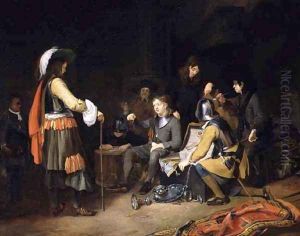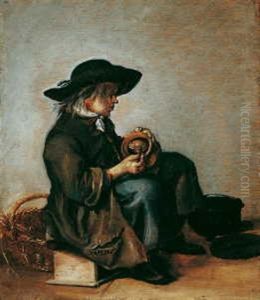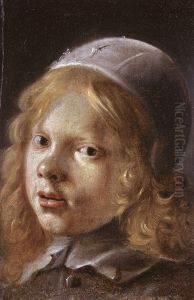Moses Ter Borch Paintings
Moses ter Borch was a Dutch Golden Age artist, born in 1645 in Zwolle, the Netherlands, into a family of successful artists. His father, Gerard ter Borch the Elder, was a notable Dutch genre painter who played a significant role in Moses' early artistic education. His half-brother Gerard ter Borch the Younger also became a highly respected painter. The ter Borch family was well connected in the art world, which provided Moses with a fertile environment for developing his skills.
Moses showed promise as an artist from a young age, but his career and life were tragically cut short. He worked primarily as a painter, although very few of his works have survived, making it difficult to fully assess his style and influence. His existing pieces suggest that he was influenced by his family's artistic tradition, which was characterized by a fine attention to detail and a focus on capturing the subtleties of human interaction and domestic life.
Moses ter Borch's life came to an early end when he died at the young age of 22. His death in 1667 was a result of his military service rather than his work as an artist. He had joined the Dutch navy and was aboard a ship that was part of a fleet involved in the Second Anglo-Dutch War. He died at sea near the coast of West Africa, and his premature death meant that his artistic potential was never fully realized. Despite his short life, Moses ter Borch is remembered for his connection to the prominent ter Borch artistic dynasty and the few works he left behind, which hint at what could have been a successful career in the Dutch art world.


